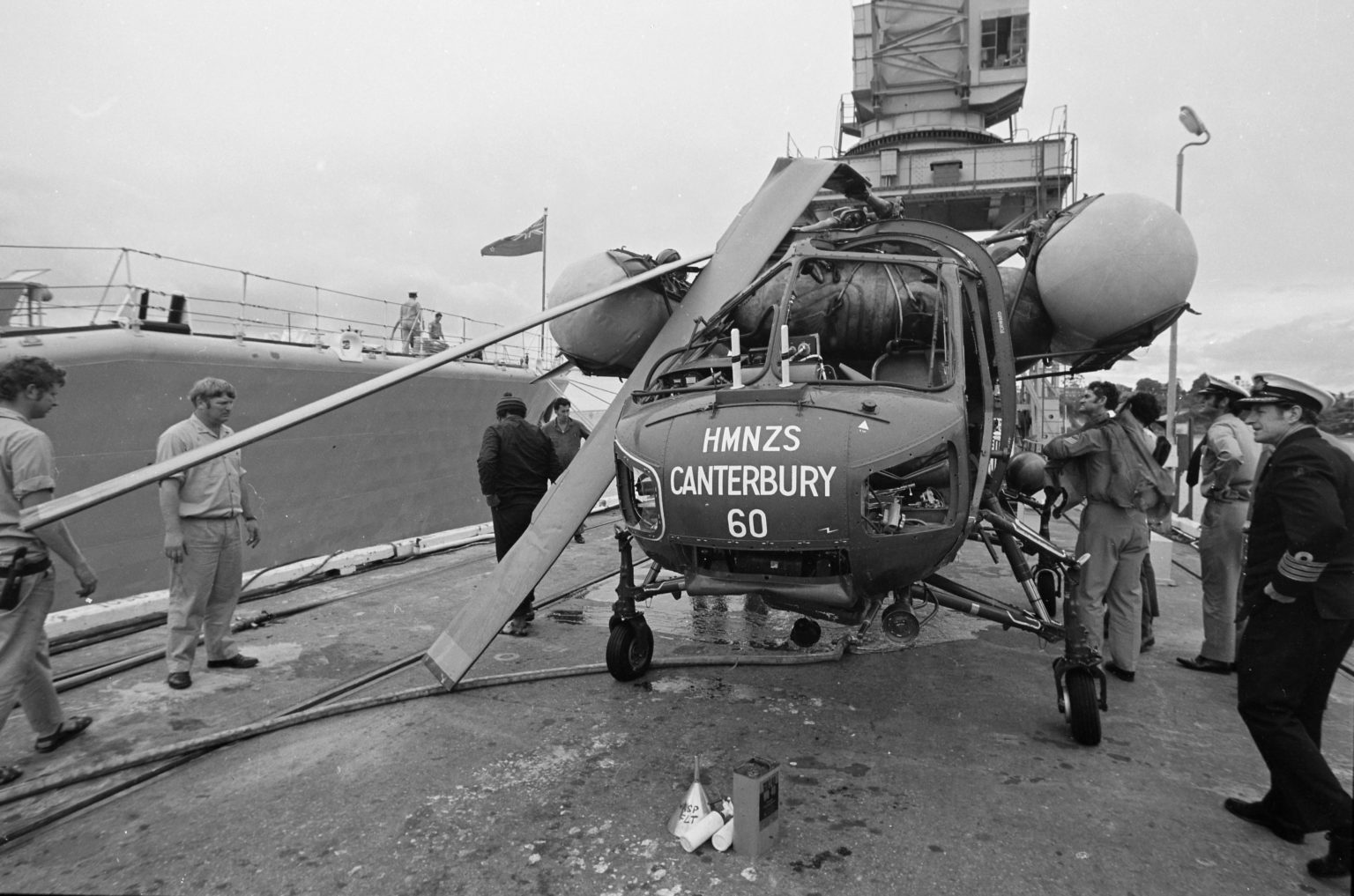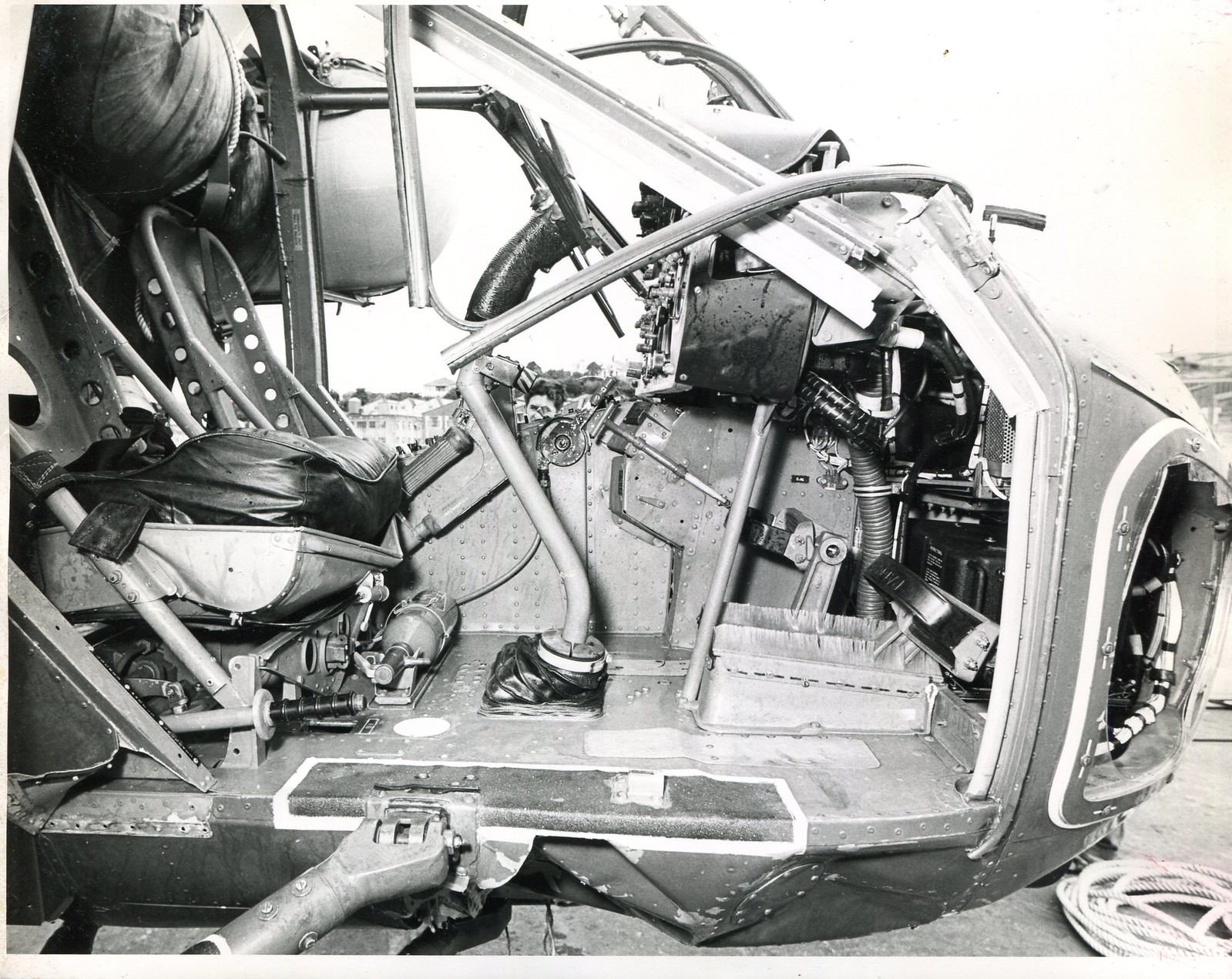Post by Dave Homewood on Oct 22, 2023 19:53:45 GMT 12
Westland Wasp NZ3903's entry on NZDF Serials is a little brief in its loss details when it crashed into the harbour, stating merely, "Crashed into Waitemata Harbour after engine failure 30 November 1973. Crew unhurt."
So this article from The Press dated 1st of December 1973 gives a little of the human perspective.
So this article from The Press dated 1st of December 1973 gives a little of the human perspective.
’Copter falls in harbour
(N.Z. Press Association) AUCKLAND, November 30.
The Wren passenger of a Royal New Zealand Navy Wasp helicopter which crashed into the Waitemata Harbour this morning from about 300 ft probably owes her life to the pilot, who dragged her free of the almost-submerged cockpit and placed her in a liferaft.
The helicopter. which belonged to the frigate Canterbury, was being flown by Lieutenant J. Green, of Dunedin, and had one passenger, Leading Wren S. Stewart, of Dargaville, when the accident occurred during a routine training flight.
Miss Stewart became entangled with machinery in the cockpit after the helicopter belly-landed, and she had to be freed and assisted into an inflatable liferaft.
The helicopter did not submerge completely on impact because of air trapped inside, and Lieutenant Green had time to swim around the nose of the Wasp and free his passenger before the craft settled deeper in the water.
Two flotation bags on top of the fuselage inflated after impact and kept the top of the Wasp just above the water.
Miss Stewart was semiconscious when a rescue launch arrived. After an examination at the Devonport Naval Hospital, both she and Lieutenant Green were found to have suffered only shock and bruising.
Naval, harbour board and police launches were soon on the scene. Four Royal New Zealand Air Force personnel were flown to the wreck in an Iroquois helicopter from Hobsonville, and winched down to a launch to assist with salvaging the damaged helicopter.
The helicopter suffered considerable superficial damage with twisted rotors, bent fuselage and blown-out cockpit windows.
After being towed for some distance by two naval launches the helicopter was lifted by a harbour board floating crane.
(N.Z. Press Association) AUCKLAND, November 30.
The Wren passenger of a Royal New Zealand Navy Wasp helicopter which crashed into the Waitemata Harbour this morning from about 300 ft probably owes her life to the pilot, who dragged her free of the almost-submerged cockpit and placed her in a liferaft.
The helicopter. which belonged to the frigate Canterbury, was being flown by Lieutenant J. Green, of Dunedin, and had one passenger, Leading Wren S. Stewart, of Dargaville, when the accident occurred during a routine training flight.
Miss Stewart became entangled with machinery in the cockpit after the helicopter belly-landed, and she had to be freed and assisted into an inflatable liferaft.
The helicopter did not submerge completely on impact because of air trapped inside, and Lieutenant Green had time to swim around the nose of the Wasp and free his passenger before the craft settled deeper in the water.
Two flotation bags on top of the fuselage inflated after impact and kept the top of the Wasp just above the water.
Miss Stewart was semiconscious when a rescue launch arrived. After an examination at the Devonport Naval Hospital, both she and Lieutenant Green were found to have suffered only shock and bruising.
Naval, harbour board and police launches were soon on the scene. Four Royal New Zealand Air Force personnel were flown to the wreck in an Iroquois helicopter from Hobsonville, and winched down to a launch to assist with salvaging the damaged helicopter.
The helicopter suffered considerable superficial damage with twisted rotors, bent fuselage and blown-out cockpit windows.
After being towed for some distance by two naval launches the helicopter was lifted by a harbour board floating crane.








